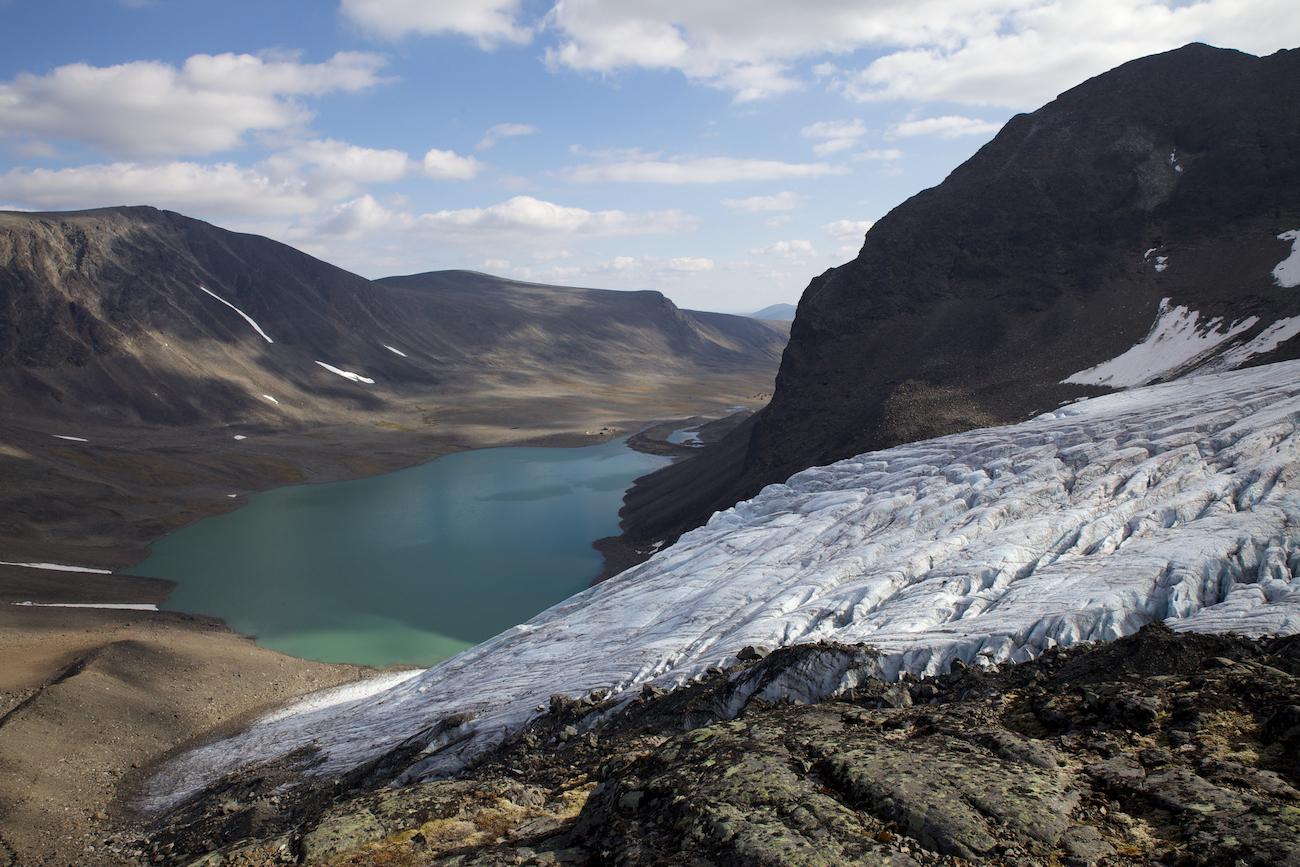How the Climate Crisis Dethroned Sweden's Tallest Mountain Peak
Kebnekaise's southern peak is now only the second-tallest mountain in Sweden.
Updated Sept. 6 2019, 3:19 p.m. ET

Last month, Iceland held a funeral for a glacier that melted due to rising global temperatures — and now, Swedes also have a glacier to mourn. As reported by The Guardian, the highest mountain peak in Sweden has been dethroned due to a glacier at the top of the mountain melting, now making it only the second-tallest mountain peak in Sweden. The reason? Climate change — specifically, the planet's temperature rising as a result of human activities.
The mountain peak in question is the southern peak of Kebnekaise, the tallest mountain in Sweden. Kebnekaise's northern peak is generally about a meter shorter than the southern peak, but now, the northern peak has claimed the top spot.
According to The Guardian, there has been a record of both peaks' heights since 1880, and the southern peak has consistently been higher than the north. That has fluctuated in the summer before; however, on Tuesday, Sept. 3, the day that marked the end of the summer melt, Professor Gunhild Ninis Rosqvist and her team measured both peaks. Rosqvist, a Stockholm University geography professor and the head of the Tarfala Research Station in Sweden, found that the northern peak measured 2,096.8 meters, 1.2 meters taller than the southern peak, which measured 2,095.6 meters.
“This is the lowest height ever measured,” Rosqvist, who has measured the mountains for years, told The Independent. “Over the past 50 years, the height of Kebnekaise’s southern peak has decreased by 24 meters."

This is not the first time this has happened — in August 2018, the New York Times reported that the southern peak had also fallen behind the northern peak. But what makes the current instance stand out is not only the fact that the peak is at the lowest its ever been, but also how late in the season it is. Summer is winding down, so temperatures should be getting cooler, and ice should be reforming — but it's not.
This melting is due to the temperature rise of the planet, made possible by increased greenhouse gases in the atmosphere, which trap heat from the sun. And where have those greenhouse gases come from? Humans. Specifically, humans burning fossil fuels.
According to the Intergovernmental Panel on Climate Change (IPCC), in 2010, 25 percent of global greenhouse gas emissions came from electricity and heat production, 24 percent from agriculture (including factory farming of livestock, cultivation of crops, and deforestation), 21 percent from industry, 14 percent from transportation, and 6 percent from buildings. And what do all those industries have in common? A massive reliance on burning fossil fuels and/or emitting greenhouse gases into the atmosphere.
People say they are fearful of the ways climate change will affect the Earth in the future — but as the peaks of Kebnekaise prove, climate change is already affecting our planet. To meet the the Paris Agreement's goal of keeping the global temperature rise below 2 degrees (or ideally, 1.5 degrees) Celsius, we must step up and take action. We need laws to keep fossil fuels in the ground so we can significantly reduce the amount of greenhouse gases in the atmosphere, which will halt the global temperature rise.